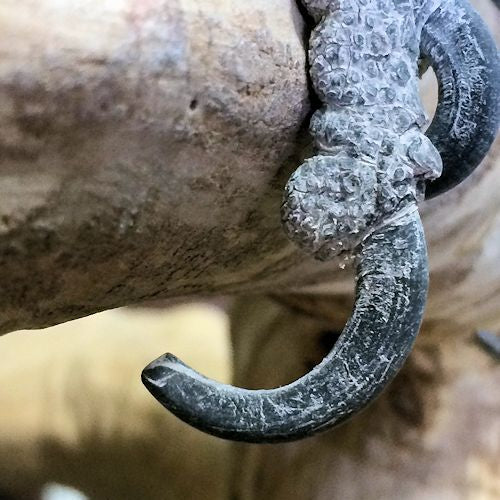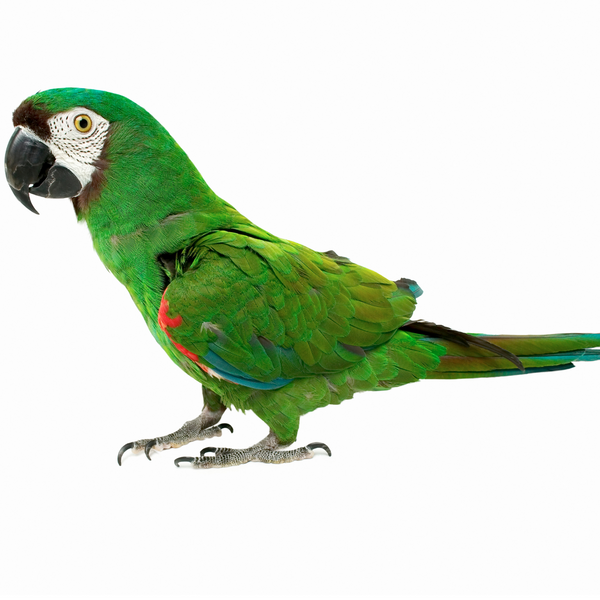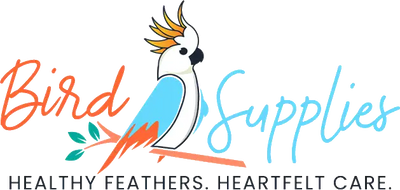Revised: 10/28/2023
Table of Contents
- Do I need to get my bird's nails clipped?
- What happens if you don't cut your bird's nails?
- Signs your bird needs nail clipping
- Step-by-step bird nail clipping tutorial
- How often to clip bird nails
- When should I hire a bird grooming professional?
- What to look for in a bird grooming professional?
Do I need to get my bird's nails clipped?
You might be wondering why bird nail clipping is such an essential part of bird grooming. In the wild, birds naturally maintain their nail length through their daily activities, like perching on various surfaces, climbing, and scratching. However, in a home environment, these opportunities for natural nail wear can be limited, leading to overgrown nails. Neglecting your bird's nails can result in various health and behavioral issues, including:
-
Injuries: Overgrown nails can cause your bird to snag them on cages, toys, or other objects, leading to painful injuries.
-
Balance and Mobility: Long nails can hinder your bird's ability to balance on perches, which can lead to falls and mobility issues.
-
Aggression: Discomfort caused by overgrown nails can make your bird irritable or aggressive, negatively impacting your bond.
-
Arthritis: Long nails make the bird have to shift its posture when perching, putting a strain foot and hip joints.
-
Infections: If overgrown nails become cracked or damaged, they can create openings for bacterial or fungal infections.
Excessively long nails can also result in joint stress by restricting normal movement. In some cases, arthritis can be caused by infection to the joint caused by injury or even surgery. ThinkParrot.com |
What happens if you don't clip your bird's nails?
Before we dive into the "how" of bird nail clipping, let's take a moment to understand the structure of a bird's nails. Bird nails, also known as talons, are made of a protein called keratin, much like our own fingernails. However, they serve a different purpose for birds. They are used for perching, climbing, grasping food, and, in some species, for defense.
Unlike any other birds, parrots have zygodactyl feet, which means two toes face forward, while the other two point backward. It's like having two thumbs! Parrots' feet are strong and flexible, almost like little hands, which helps them manipulate objects with surprising dexterity.
But what's even more incredible is that parrots are the only birds that use their feet to eat. They can pick up and hold food with one foot, while they nibble on it with their beak. This clever adaptation showcases the intelligence and adaptability of these remarkable birds.
5 Signs Your Bird Needs Nail Clipping

1. Nails That Are Too Long:
Examine your feathered friend's feet while it is standing on a flat surface. If the nail is so long that it makes the joint unnaturally raise up backward, your bird needs a nail clipping. Consulting your avian veterinarian can provide valuable insights into your bird's foot anatomy. Regularly inspect your avian companion to spot any anomalies, not only for nail care but also to detect potential health issues.
2. Changes in How Your Bird Perches:
If you see your bird doing weird stuff with its feet, like favoring one foot or hanging out on the cage floor instead of its perch, something's up. It could be because its nails are too long, making it uncomfortable to sit the usual way. Getting a nail trim should fix this in no time. But if your bird keeps acting strange, it might mean its feet are hurt or there's something more serious going on. In that case, you should visit the vet pronto.
3. Problems Getting Around:
Our birds rely on their feet for pretty much everything – walking, grabbing food, climbing, and playing. If their nails are too long, it messes up all these activities. So, if you see your bird's nails getting stuck on stuff like your clothes or their food, it's time for a trim. Healthy nail length should help your bird get around comfortably.
4. Skin Issues:
If your bird's skin starts to look different, like it's rough or has scabs, it might be nail-trim time. Birds use their nails to scratch their itches, but if the nails are too long, they can accidentally scratch too hard, causing bleeding or sores. So, if you see those long nails and skin problems, consider a trim. If the skin doesn't look better after a day or two, reach out to your bird vet right away.
5. Enjoyable Bird Time:
Being able to hang out with your bird without getting scratched all over your hands is a good thing, right? But if your bird's nails are too sharp and long, it can get pretty painful. So, if you're having trouble enjoying time with your bird because of those nails, it's time to think about a nail trim. It'll make your bird and you much happier when you're together.Step-by-step bird nail clipping tutorial
Now that we understand the importance of bird nail clipping and the signs that your bird needs a trim, let's get into the nitty-gritty of how to perform this essential grooming task.
Tools You'll Need
Before you begin, ensure you have the following tools:
-
Bird Nail Clippers or a Pet Nail Grinder: Specialized bird nail clippers are available at pet stores and online. These clippers are designed to prevent overcutting and injury. Choose one that suits the size of your bird.
-
Styptic Powder: In case of accidental bleeding, styptic powder helps stop the bleeding quickly.
-
Towel or Cloth: This will help you restrain your bird gently.
-
Good Lighting: Adequate lighting is essential for precision.
-
Someone to Assist: Having another person to help hold your bird can make the process easier and safer.
Step-by-Step Guide
Follow these steps for a safe and successful bird nail clipping session:
1. Prepare Your Bird
Begin by finding a quiet, well-lit area for the procedure. Cover your bird's head with a towel or cloth to calm them and reduce stress. Gently but firmly hold your bird.
2. Identify the Quick
The "quick" is the blood vessel inside the nail, and it's essential to avoid cutting into it. In light-colored nails, the quick is often visible as a pinkish line. In darker nails, you'll need to be more cautious. Only trim the sharp, pointed tip of the nail, avoiding the quick.

3. Clip One Nail at a Time
Start with one nail and carefully trim it. If you're unsure, err on the side of caution and clip less rather than too much. If your bird has multiple nail types (e.g., talons and aft claws), remember to trim each type appropriately.
4. Use Styptic Powder If Needed
If you accidentally cut into the quick and your bird starts bleeding, don't panic. Quickly apply styptic powder to stop the bleeding. Consult with an avian veterinarian if necessary.
5. Reward and Relax
Once you've finished, offer your bird a treat or some extra love to help them associate the experience with positive feelings.
How Often to Clip Bird Nails
The frequency of nail clipping depends on various factors, including your bird's species, age, whether you use grooming perches and activity level. Generally, smaller birds with faster nail growth may need more frequent trims than larger birds.
As a guideline:
- Small birds: Every 4-8 weeks
- Medium-sized birds: Every 8-12 weeks
- Large birds: Every 12-16 weeks
Monitor your bird's nails and adjust the schedule accordingly. If you're uncertain, consult with an avian veterinarian.
When should I hire a bird grooming professional?
While many pet owners successfully trim their birds' nails at home, there are situations in which seeking professional help is the wisest choice. Here are some instances when you should consider hiring a bird grooming expert:
1. Lack of Experience or you're nervous about it.
If you're a novice at bird nail trimming, it's better to have an experienced professional handle the task. They have the knowledge and skill to ensure a safe and comfortable experience for your bird.
2. Bird's Temperament
Some birds are more cooperative during nail clipping than others. If your bird is exceptionally anxious, aggressive, or uncooperative, a professional groomer can handle the situation effectively.
3. Health Concerns
If your bird has existing health issues or concerns, it's best to consult with a veterinarian or avian specialist for nail care. They can ensure that the procedure doesn't exacerbate any health problems.
4. Specialized Equipment
Some birds have unique nail characteristics or requirements that demand specialized equipment and techniques. Professionals have access to the necessary tools to address these specific needs.
What should I look for in a bird grooming professional?

When seeking a bird grooming professional, it's essential to choose someone with the right qualifications and expertise. Here are some key considerations:
1. Experience and Certification
Look for professionals who have extensive experience in avian grooming, such as an avian vet or someone who has worked as a vet tech for an avian or exotic veterinarian.
2. Positive Reviews and References
Read reviews and ask for references from other bird owners who have used their services. Positive feedback and recommendations can help you make an informed choice
3. Ask your avian vet
Your avian vet may refer a previous vet tech who has taken up grooming on th side.
4. Contact a local bird club or bird rescue
The avian community is usually pretty tight knit so you can often get a referral from one of these organizations.
In conclusion...
By incorporating regular nail care into your avian routine, you not only ensure your bird's well-being but also enhance the quality of your interactions. A pain-free, enjoyable bond with your bird is the ultimate goal, and timely nail trimming is a key step in achieving it. So, keep a watchful eye on those adorable feet, be attentive to your bird's cues, and don't hesitate to seek professional guidance when needed. With proper nail care, you and your feathered companion can enjoy many more happy and scratch-free moments together.
Related Posts:
How To Trim Your Bird's Wings
Step Up Your Parrot Foot Care Game
References:
Merck Veterinary Manual. (n.d.). Geriatric Diseases of Pet Birds. https://www.merckvetmanual.com/exotic-and-laboratory-animals/pet-birScottsdale Veterinary Clinic. (n.d.). Avian arthritis [PDF]. http://scottsdaleveterinaryclinic.com/wp-content/uploads/sites/5/2016/07/AvianArthritis.doc.pdf
Animal Health Foundation. (2012, November 14). Birds can get arthritis too. Animal Health Foundation. https://www.animalhealthfoundation.org/blog/2012/11/birds-can-get-arthritis-too/
Link to this blog
Diane Burroughs, LCSW is a licensed psychotherapist trained in ABA therapy techniques. She specializes in avian anxiety disorders and is certified in Nutrition For Mental Health. Diane has written a number of bird behavior books and she offers behavior consultations. She's developed a range of UnRuffledRx Science-backed Parrot Wellness Supplies.
Diane's products have been featured in the Journal of Avian Medicine and Surgery and at Exoticscon, a conference for exotic pet veterinarians. Her bird collars & supplements are stocked in avian vet clinics and bird stores throughout the US. With over 30 years in the field of behavior, Diane has created thousands of successful individualized behavior plans that help pets thrive.
TAGS: #BirdNailClipping #ClippingBirdNails #BirdGrooming
SHARING IS CARING! PLEASE SHARE ON YOUR FAVORITE SOCIAL MEDIA NOW!

